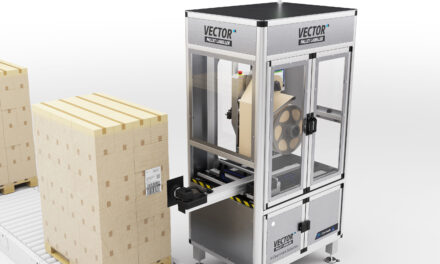 All design engineers are aware that poor EMC management and control can result in operational problems, which in extreme cases can have a direct effect on safety. This, however, is particularly important in the rail industry, where safety-critical systems – such as signalling and rolling stock equipment – must be EMC compliant. Jean-Louis Evans, managing director at TÜV SÜD, comments
All design engineers are aware that poor EMC management and control can result in operational problems, which in extreme cases can have a direct effect on safety. This, however, is particularly important in the rail industry, where safety-critical systems – such as signalling and rolling stock equipment – must be EMC compliant. Jean-Louis Evans, managing director at TÜV SÜD, comments
The essential requirements of the EMC Directive state that the equipment shall be designed and manufactured so as to ensure that:
• The electromagnetic disturbance it generates does not exceed a level above which radio and telecommunications equipment, or other equipment, cannot operate as intended.
• It has a level of immunity to the electromagnetic disturbance to be expected in its intended use which allows it to operate without unacceptable degradation of its intended use.
Under the EMC Directive, manufacturers of apparatus must prepare and maintain technical documentation and usually carry out an EMC assessment. A declaration of conformity is then made, and the CE marking affixed.
The directive defines ‘apparatus’ as ‘any finished appliance or combination thereof made commercially available as a single functional unit’. It also addresses the EMC compliance requirements for larger, complex apparatus which can be moved and used in various locations, defining these as ‘mobile installations’. This means that the compliance requirements for rolling stock on the railway are the same as those for apparatus.
The EMC Directive also contains requirements for ‘certain apparatus’, bespoke equipment intended for permanent incorporation in a fixed installation, which would not otherwise be commercially available. In this case, such apparatus will not require CE marking or the raising of a declaration of conformity, with the directive specifying additional documentation requirements.
Meeting the standard
Manufacturers of railway apparatus must take into account the Harmonised European Standard EN 50121 relating to railways. This has five parts which cover emissions of the whole railway system to the outside world, rolling stock, signalling and telecommunications apparatus, as well as fixed power supply installations and apparatus.
For apparatus, there is only one route to compliance – self declaration with internal production control. This means that it is now at the manufacturer’s discretion to involve an EMC Notified Body and it requires the manufacturer to: produce technical documentation; perform an EMC assessment; and provide additional information (for identification of the apparatus).
For apparatus where the EMC harmonised standards can be applied in full, the resulting EMC test report will form the basis of the technical documentation that the manufacturer is required to keep under the EMC Directive. Where harmonised standards cannot be applied in full (e.g. for rolling stock), then an EMC assessment will need to be made in conjunction with the limited testing that can be performed.
Size matters
Ideally, EMC testing will be performed in an EMC test facility, but in the rail industry logistics are often an issue, so large or complex equipment can be tested in-situ either at the manufacturer’s premises or the final point of installation.
Much of the technology being used in the railway sector is tried and tested and available as commercial off the shelf (COTS) equipment. However, beware as these may have a lower EMC performance than that specified for rail use. Where COTS equipment is used, a gap analysis should therefore be performed against the standards to which the equipment has been tested and the standard that best represents the final point of installation. If a gap is identified, then additional testing may be required unless a technical rationale can be used to demonstrate compliance.
Rolling Stock
Rolling stock also has unique power supply characteristics and these low frequency emissions can interfere with signalling. Furthermore, as modern rolling stock uses a wealth of communication and control electronics, it is vital that these perform reliably and safely.
Due to health, safety and operational issues caused with conducting Radio Frequency (RF) immunity testing outside of an EMC test facility, no testing of this type is conducted on new or modified rolling stock. RF emissions measurements should be made trackside, with the test site meeting the ‘free space’ requirements as far as practicably possible. The type of rolling stock under consideration will determine if emission measurements are made with the rolling stock stationary or slow moving and what systems are to be operational.
The electromagnetic characteristics of rolling stock will also change if it has been modified or updated, and for a great deal of rolling stock running with ‘grandfather rights’, the existing EMC characteristics are unknown. Before the modification commences, an RF survey should therefore be performed, with a further survey being conducted once all modifications are complete, allowing a gap comparison to be made.
Documenting complexity
The railway industry has such a long history that older safety-critical equipment running alongside more bespoke new equipment is commonplace.
It is therefore important that, in order to meet all regulatory and customer requirements, the control of EMC throughout a product development project is documented and agreed upfront with all involved parties. Testing should be conducted against all of the relevant standards and, where this is not possible, a technical rationale and assessment produced to confirm how compliance has been achieved.
TÜV SÜD

